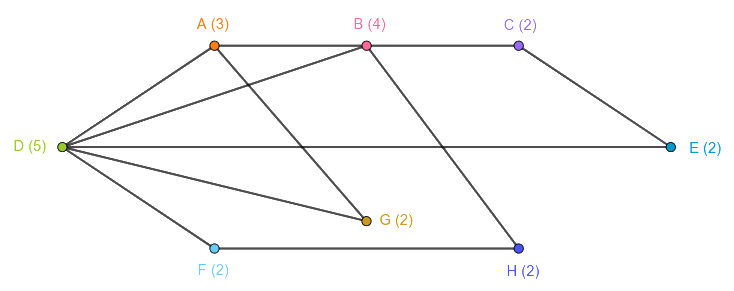Topics: Graph Theory
The Havel-Hakimi algorithm is an algorithm that lets us know if there exists a simple graph whose degree sequence is a given non-increasing sequence of non-negative integers.
The algorithm consists of the following steps:
- Take the first greatest integer. Let be this value.
- Remove from the sequence
- Subtract from the next integers.
- Reorder the sequence so that it is non-increasing again.
- Repeat steps 1 through 4 until we reach a sequence that consists of all zeroes or we get a negative integer.
When the resulting sequence consists of all zeroes, the sequence corresponds to a simple graph and we say that it is a graphic sequence. Otherwise, the sequence doesn’t correspond to a simple graph and we say that it is non-graphic.
Graphic Example
Let be our sequence. By following the algorithm, we get:
- First iteration:
- Second iteration:
- Third iteration:
- Fourth iteration:
- Fifth iteration:
Voilà. Since the resulting sequence consists of all zeroes, the sequence is graphic. In effect, its associated simple graph is the following:
